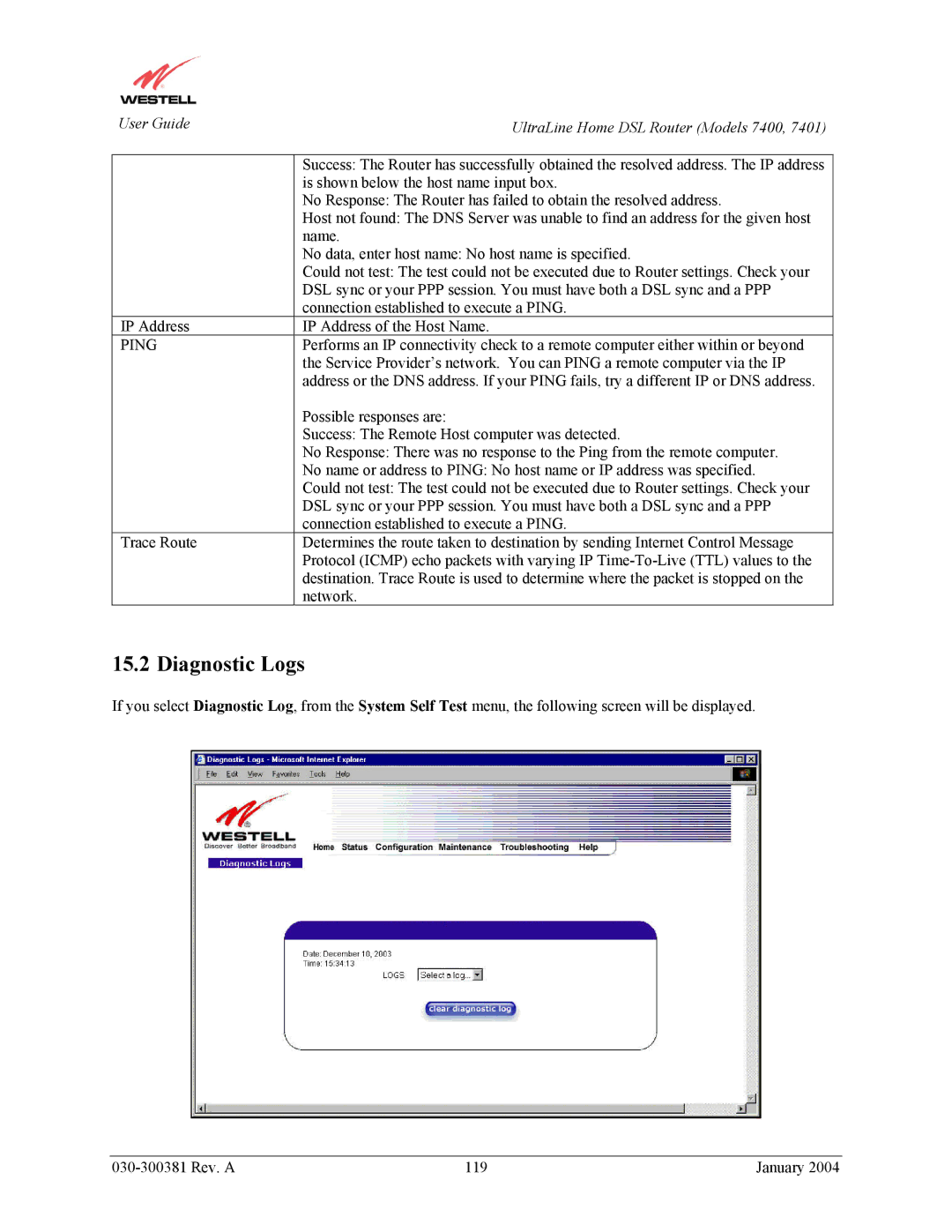
User Guide | UltraLine Home DSL Router (Models 7400, 7401) |
|
|
| Success: The Router has successfully obtained the resolved address. The IP address |
| is shown below the host name input box. |
| No Response: The Router has failed to obtain the resolved address. |
| Host not found: The DNS Server was unable to find an address for the given host |
| name. |
| No data, enter host name: No host name is specified. |
| Could not test: The test could not be executed due to Router settings. Check your |
| DSL sync or your PPP session. You must have both a DSL sync and a PPP |
| connection established to execute a PING. |
IP Address | IP Address of the Host Name. |
PING | Performs an IP connectivity check to a remote computer either within or beyond |
| the Service Provider’s network. You can PING a remote computer via the IP |
| address or the DNS address. If your PING fails, try a different IP or DNS address. |
| Possible responses are: |
| Success: The Remote Host computer was detected. |
| No Response: There was no response to the Ping from the remote computer. |
| No name or address to PING: No host name or IP address was specified. |
| Could not test: The test could not be executed due to Router settings. Check your |
| DSL sync or your PPP session. You must have both a DSL sync and a PPP |
| connection established to execute a PING. |
Trace Route | Determines the route taken to destination by sending Internet Control Message |
| Protocol (ICMP) echo packets with varying IP |
| destination. Trace Route is used to determine where the packet is stopped on the |
| network. |
15.2 Diagnostic Logs
If you select Diagnostic Log, from the System Self Test menu, the following screen will be displayed.
119 | January 2004 |
